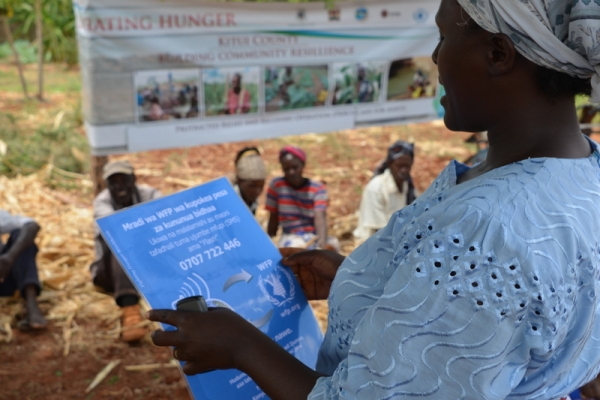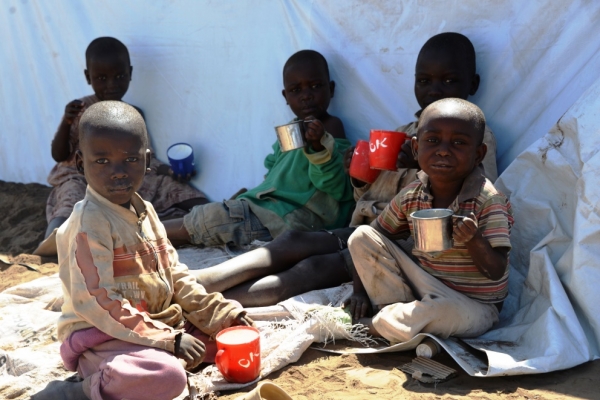“In Africa, hunger is a constant,” says U.S-based charity group Save the Children. Over 200 million Africans are reportedly living in hunger, meaning almost one in every three are either hungry or undernourished. The World Food Programme (WFP), the food assistance branch of the United Nations and the world’s largest humanitarian organization addressing hunger and promoting food security, has been leading the charge to end hunger globally—and in Africa—since it was established in 1961. With over $2 billion of cash reserves—sourced mostly from donors globally—the WFP provides food assistance to 80 million people in 75 countries each year from its base in Rome, Italy. The WFP has been very active in many parts of Africa, with its largest operations currently in South Sudan due to civil unrest. It is also actively supporting relief efforts in Central Africa Republic and in West Africa countries ravaged by Ebola. However, for sub-Saharan Africa, which holds the second largest population of hungry people after Asia and the Pacific (578 million), the international food agency has been using mobile money, with significant success, to pursue its new strategy of handing out cash rather than distributing food.
The WFP has been very active in many parts of Africa, with its largest operations currently in South Sudan due to civil unrest. It is also actively supporting relief efforts in Central Africa Republic and in West Africa countries ravaged by Ebola. However, for sub-Saharan Africa, which holds the second largest population of hungry people after Asia and the Pacific (578 million), the international food agency has been using mobile money, with significant success, to pursue its new strategy of handing out cash rather than distributing food.
Poverty is considered the principal cause of hunger globally as people simply do not have sufficient income to purchase enough food. Africa is no different, with more than 42 percent of its population living on less than $1.25 dollars a day. To curb both hunger and poverty, the WFP in recent years switched to cash handouts, rather than its traditional style of distributing only food items. “Where the market are properly functioning we have a choice of either purchasing ourselves locally and then distributing to our beneficiaries or if the retail supply chain works well to make a value transfer in terms of voucher or cash payment increasingly through digital or electronic to make them available to our beneficiaries,” Robert van der Zee, WFP’s Treasurer and Deputy Director of Finance, told Ventures Africa in an interview. “In the end it depends on the context where we are able to provide a cash base intervention locally and whether it is more cost effective because of course our donors would only want us to do that if it is cost effective and cost efficient.”
Credit: The World Food Programme
It has seen a smoother transition to cash handouts in East Africa, than in the western part of the continent. “We have done this (cash handouts) for many countries across the globe, particularly in the Middle East tremendously because of the Syrian crisis and of course there are better financial systems that we can tap into and good retail supply chains,” Robert noted. “We have seen that as well perhaps more in Eastern Africa, so far than in Western Africa but Western Africa is catching up rightfully as well but there are some funny inclusion challenges.”
Some of these challenges include: are providers available in the rural areas? Is there connectivity? Is there liquidity cashing in the system? Is there cash been taken out of the system? This is where mobile money has made the difference. “Mobile money has many advantages; one of them is that you can quickly distribute cash by SIM cards,” he noted. East Africa has recorded the most success in deploying this technology to grow financial inclusion, particularly within rural areas were issues like hunger are prevalent.
M-Pesa, a mobile-based money transfer and micro-financing service, launched in 2007 by Vodafone for Safaricom and Vodacom, has revolutionized the payment system in Kenya and deepened financial inclusion across East Africa. Since it was rolled into the financial market, it has become the most successful mobile-powered financial service in the developing world. As of June 2013, 98 million of the 203 million registered mobile money accounts globally were in Sub-Saharan Africa, with East Africa holding the lion’s share of Sub-Saharan Africa’s total and accounting for 34 percent of the global total.
The branchless banking service allows users to deposit money into an account stored on their cell phones, to send balances using PIN-secured SMS text messages to other users, including sellers of goods and services, and to redeem deposits for regular money. Users are charged a small fee for sending and withdrawing money using the service, a cost effective option for the WFP.
In August, 2014, WFP provided 3,500 mobile phone handsets to the heads of households in Rwandan camps to facilitate the electronic money transfer through partnership with financial institutions, using the mVisa technology provided by VISA Inc. Each refugee receives RWF 6,300 ($9) per month to cater for food needs. The WFP deposits the entitlements with the bank, which then credits each beneficiary account (mobile number), and the refugee families then receive a confirmatory text message showing the credit to their account.
Credit: World Food Programme
Tomson Phiri, a Zimbabwean journalist, also confirmed that the WFP is using cash and vouchers in the Southern African country to tackle hunger where food is available in the market place but most people do not have the required income to buy. “In the past, WFP handed out cash to beneficiaries waiting patiently in line. Nowadays, the organization transfers cash and food vouchers via mobile phone.” This method, Tomson notes, is more convenient for the recipient and cheaper for the food agency.
With most countries like Zimbabwe filled with rural settlements, inaccessible to conventional financial institutions, Tomson adds that it is also a good way of injecting money into cash-poor areas. In 2013, the WFP transferred more than $9 million through cash and voucher schemes to some 295,000 people. Its cash and voucher distribution this year is expected to exceed $13 million.
But West Africa still has some catching up to do, according to Robert. “… The problem for financial inclusion [in West Africa] is really an eco-system that needs to be aligned, so you need government to stimulate the sector: You need a regulation that helps financial service providers see opportunities in servicing the poor people, you need good use of technology to make it cost effective and you need and partners using the service, utility companies or mobile phone companies or the likes of ourselves that make social transfers.”
During Robert’s earlier presentation at the EuroFinance conference in Lagos, Nigeria’s commercial capital, last week, he identified three key challenges that have limited the WFP’s cash-giving scheme—Power, Identification, and cost of patronizing Microfinance institutions. But these, as well has what West Africa needs to do to catch up with its Eastern neighbors, can be significantly tackled using mobile money solutions. “The good examples are primarily Kenya and Tanzania where there is enough trust in the M-Pesa system that people keep their money in their mobile accounts.”
However, the revolutionary payment tool hasn’t been deployed without challenges, a reason why the WFP has stuck mostly with card payment solutions for a number of its African operations. “Our donors have pretty high standards in terms of reporting they want to know how cash is been used,” Robert noted. “Generally banks are much better (than more money agents) in reporting back to us on how funds are been used and of course you can make specific agreement with retailers.”
Like Robert correctly points out, there will be an eventual convergence between mobile and banking. East Africa (and parts of Southern Africa) has already positioned itself to be at the forefront when the benefits of mobile money start trickling in, one of which is providing the WFP a useful tool to help rid its communities of hunger. And Should West Africa hope to do the same, pursuing greater financial inclusion using the innovative payment system will prove vital, as the number of mobile money accounts gradually outnumbers bank accounts.
__________________________________
Source: Ventures Africa






























